Dear Artist,
Yesterday, Richard Woods of Sparks, Nevada wrote, “I’m just heading out painting at a location where snow is a good possibility. The forecast calls for a high of 36 degrees Fahrenheit. Painting in cold weather is a pain for me. I see pictures of you working while sitting in snow banks and at high elevations with snow coming down. How do you do it?”
Thanks, Richard. With forethought. The main problems are wind, precipitation, and the temperature of things.
Wind: You may need to sacrifice a really good view to put your back to the wind. I often paint in a folding chair, so an extra chunk of foam on the chair-back is useful. Also, one of those fur-lined helmets with the flaps helps prevent an early loss of ears. Parkas or hoodies tend to interfere with head movements and the business of looking over your shoulder for bears. Fur-lined hiking boots are a must. “There is no bad weather for painting en plein air,” says Barbara Jablonski, “only bad painting clothes.” Teach yourself to paint using leather or wool gloves. I used to cut the fingertips off, but it’s only necessary if you’re doing finicky work. Regular gloves or even mitts can help make your stroke broader and fresher.
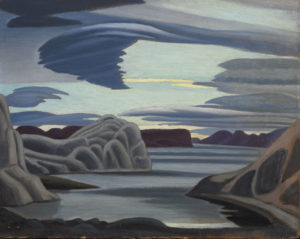
Lake Harbour, South Shore, Baffin Island, Morning, 1930
Oil on beaverboard
11 7⁄8 × 15 1/16 inches
by Lawren Harris
Precipitation: Whether straight down or sideways, snow, sleet or rain are fun-spoilers. Wet snow falling and puddling on acrylic or watercolour has only limited creative value. Oil and water, of course, don’t mix. Best Brellas are simply brilliant on calm, sunny days — but in a gale they can move you and your work a mile down the valley.
Warmth: “Scottish antifreeze” from a small flask is best. Cocoa from a thermos works but is less fun. Some ladies of my acquaintance put chemical warmers called Heatmax Hot Hands and Heatmax Toasti Toes into needy areas. I like to point out that Scotch taken orally in moderation warms all over. Some painters report the main benefit of sub-zero painting is the achievement of speed. But there’s also a wonderful feeling of smugness that slips over you like a soft woollen blanket. Whether an island unto yourself or together with a gaggle of good companions, you’re adrift and apart from a madding world and in soft communion with wonder.
Best regards,
Robert
PS: “Working outdoors puts you in direct contact with the life force, not just the light and the landscape, but also the vitality of the world.” (George Carlson)
Esoterica: Acrylics and watercolours freeze easily and take on an unpleasant granular texture which stays on after they thaw. Keep all your paints, including oils, in a warm part of the car and don’t leave them in a car overnight. Liquids like acrylic medium and linseed oil should be near to room temperature for best viscosity. The Russians have pioneered thinning watercolours with vodka. When ice begins to form on the palette it may seem like the time to reconsider chartered accountancy, but really it’s just time for the lodge. Tomorrow will be another day.
“All pictures painted inside in the studio will never be as good as the things done outside.” (Paul Cezanne)
This letter was originally published as “Out in the cold” on December 16, 2011.
Have you considered a Premium Artist Listing? With each letter, an artist is featured at the bottom of this page. The Premium Artist Listings are a means of connecting artist subscribers through their work. Proceeds from each listing contribute to the production of The Painter’s Keys.
“Art must take to the road and risk all for the glory of adventure.” (Lawren Harris)
Featured Workshop
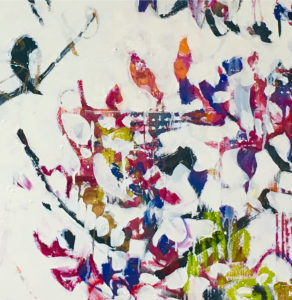 Join Ellie Harold for “Intuitive Painting: Permission to Paint Expressively,” designed especially for mature women artists of all skill levels who wish to explore this medium for soulful exploration. The retreat provides attractive accommodations (your own room!) along with lightly structured activities for centering, relaxation and low stress art-making. You’ll have plenty of free time to muse, paint, write and reflect while enjoying the colors, textures and flavors of San Miguel. This Retreat has the potential to transform not only your art but your life! You’ll return home with a specific art “care plan” to assure support for further creating. Details at www.EllieHarold.com.
Join Ellie Harold for “Intuitive Painting: Permission to Paint Expressively,” designed especially for mature women artists of all skill levels who wish to explore this medium for soulful exploration. The retreat provides attractive accommodations (your own room!) along with lightly structured activities for centering, relaxation and low stress art-making. You’ll have plenty of free time to muse, paint, write and reflect while enjoying the colors, textures and flavors of San Miguel. This Retreat has the potential to transform not only your art but your life! You’ll return home with a specific art “care plan” to assure support for further creating. Details at www.EllieHarold.com.
Featured Artist
Creativity has always been my calling however I didn’t realize that it would be primarily art related, until later in my life. Passing on knowledge is also a natural aspect of who I am. For me teaching skills to others is both a continuous joy and a personal education.
I love to draw and to paint with watercolor, pastel and mixed media, but I am also intrigued by the process and challenges of printmaking.
To me, figures and busts in clay just seem to come alive by themselves, in their own three dimensional world.
My subject matter is quite varied overall, but my personal favorites are always faces and figures of all types.

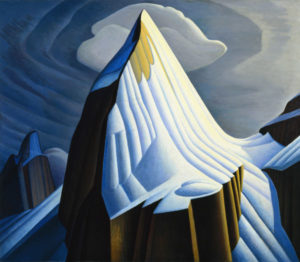
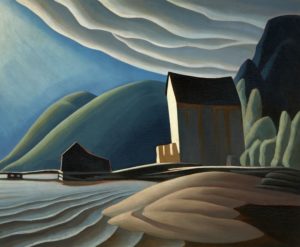

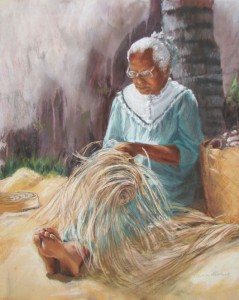
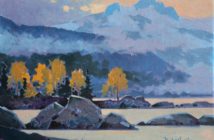

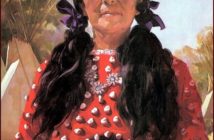
31 Comments
Okay, I hate painting outdoors. (There, I’ve finally said it!) Even in good weather. It’s uncomfortable at best, and I hate not having all my supplies close at hand. Plus you have to know how to draw.
Am I the only one?
Interesting. How does one paint without knowing how to draw?
Hah! there are tons of people who paint who don’t know how to draw.
Ever seen the elephants in India paint?
It’s blasphemy but I’m there.
Joni, I agree. 100% , plus I have a tendency toward skin cancer so I have to stay out of the sun. Yes, I know, midday is not the best light for painting outdoors anyway, but it’s a good excuse for not dealing with all the hassle. I like the convenience of everything at hand, and often am doing other household tasks interspersed with painting. (I do not have the luxury of having someone else do the cooking and cleaning and errands.)
Me too! Amen.
I hate cold weather! That is why 23 years ago my husband and I moved to Costa Rica. Painting outdoors is still challenging with wind, sun and MOSQUITOS. Painting outdoors is not my first choice but I occasionally do it, especially while traveling.
You paint wonderfully, not being able to draw.
Not me either. Acrylics dry out, weather is a factor and I also like having all my tools available to me when I see that a pinting needs that little «something»….
No Joani you’re not. I venture into the outdoors to paint once in a while being convinced it is a good thing to do. Unfortunately, I have produced almost no good work as a result. Once in a while, though, a field study has helped to get the colours and relative values in a scene better so I won’t give up completely.
GOOD ON YOU ALL!!!! I love the way a light snow brings out the 3D contours of this incredible place! Even thought white , if it really existed, is so tough to work with.
A really good tip I read was to use your car mats to protect your feet from the cold when standing on frozen ground. That said, I prefer to sit in the car!
No – I hate it too. In summer flies land in the wet paint. In Winter no matter how well prepared I am, sit still for 2 minutes and my fingers go blue, purple and then white. Robert’s right about the joy and brilliance of painting fast in big strokes sometimes – but I can do that in the studio or on my kitchen table with everything I need, including warmth, to hand!
I remember back in the 90’s when I was taking a landscape painting class at SBCC in Santa Barbara. There is a bluff up on the mesa area (now the Douglas Preserve-better than condos the locals think!) that is left wild where folks walk themselves and their dogs. It was getting colder, wetter and foggier but I was in the zone sitting on the ground w/cushion under my butt determined to paint the scene in front of me. Of course, I was younger then -only 50ish – so thought I could do it irregardless of my health. Now I aim for color fields & pics, and a cup of coffee w/friends)
And, I do love painting outdoors with our plein aire group when weather and common sense allows.
My past misadventures painting en plein air are why I no longer do this:
My first oil painting was of a thunderstorm approaching boats in a marina, and when the rain let loose, I had to grab everything and run for cover–thankfully it wasn’t a watercolor.
While painting boats near a park in Fort Lauderdale with a group of fellow watercolorists, an elementary school class came by on their field trip. One little girl promptly stuck her finger into my watercolors, and of all the choices she could have made, she chose alizarin crimson! I quickly wiped the paint off her finger, but unfortunately I stuffed the rag into my painting bag, and for months that alizarin crimson got on all my painting gear.
For an online acrylics course, I decided to paint outside on a covered porch since it required “throwing paint at the canvas.” Unfortunately, some barn swallows decided to build a nest in the ceiling of the porch at the same time. They used mud, moss, and twigs, and a lot of it got on everything, not to mention their droppings. Art is hard enough without nature trying to compete with throwing stuff.
Imbibing alcohol while plein-air painting in winter to keep warm would also help loosen up your painting as well–not a bad thing.
I started painting outside bc I was so inspired by the Impressionists. One really leaning to see colors you never get from a photograph. Shadows are never gray and objects are never one color. You develop a strong sense of cool and warm in color. And yes you learn to draw. I started doing invitational paint outs and traveled all over Florida doing them. I was one of a very few who did watercolor and I found it gave me a great advantage. But it’s also a tough medium to paint en plein air.
I am also a watercolor teacher and I take my students out to paint. For many taking a small watercolor sketch book is a good way to start. And it’s also a wonderful to have on trips. I am also an avid photographer, but I find my journals are more valuable to me. I can look at a scene I sketched in ink and laid washes over in less than 30 minutes and it takes me back to the time and place I was at. I feel all the things I was feeling and remember all the small details of the place. I encourage everybody to try it. You don’t have to sit very long so you never get uncomfortable.
Hi Cindy, I have learned to love water-colour pencils (I much prefer Derwent), and have many sketchbooks filled with visual memories of my travels that somehow connect me to places far better than photographs. I assume 30 minutes of sketching have a greater effect than 1/100th of a second exposure through a lens. More recently I have begun experimenting with washes of water (though I must try vodka; scotch probably works well too, but harder to use in such a fashion) and have been delighted with the results. But I have yet to find a small sketchbook with a decent weight of paper to enable washes to work their best. Any suggestions?
What about a small watercolour block like Acquarello or Arches and peel off the sheets when dry?
I create my own sketch books cutting water color paper to the needed size and have the pages spiral bound into a book.
Nice to see you here Jan ! stay creative the world needs it now more than ever !!
Try Kilimangero
Cindy,
Fabulous account that matches my own experiences! Love the experience of being in the presence of nature, the heart of my inspiration!!!
The results don’t have to be my masterpieces, to be profoundly important to my creative expression!
Feeling like the odd one out, I love plein air even during the winter. However, I live on the southwest coast of Canada. Our winters are usually short and mild with only a few days or weeks of snow compared to the rest of Canada and much of the United States. Our island is also limited in its mosquito and black fly population. So it is a favourable place to paint outside all year around if properly dressed for the weather. What I love is the whole sensory experience one gets when painting the landscape in the moment. There is a meaningful tension in knowing you have about 60 minutes at best and then you will be painting a new subject even if you haven’t changed your view or composition. I have learned to paint shapes of colour, mixed on the fly from a limited palette and direction of movement with only a couple of brushstrokes under these conditions. These quick studies often become part of my reference work for larger studio paintings but sometimes they are just left on their own with no further work necessary. If I like what I have done, and think it makes a finished work in itself, then it is added to my available inventory and frequently finds a home in short order. In this way, this part of my painting practice, funds my ability to do larger studio works that tend to take a bit longer to move along into the collection of an art collector. So, as much as I love painting outdoors, it is the foundation for more substantial paintings and also part of my revenue stream. For these reasons, I will happily watch the hourly winter weather forecasts for a suitable break, pull on my long underwear, grab those fingerless mitts, tug on a wool sweater and a rain and water proof outer layer and then throw the plein air backpack in the car to head out painting for a couple of hours. I do sometimes get really chilled and it is not aways fun… but it is always an adventure!
I appreciate Robert and now, Sara, very much for all they give to the larger community of artists. I would say anyone would be hard-pressed to find an equal in this time in history! However, there are a couple of keywords I noticed that made me laugh and would preclude trying to figure out how many clothes to put on or how much vodka to mix with watercolors. The first one being “bears.” One thing I haven’t learned to fit in my paint box is a bazooka. Or a personal bodyguard to watch for destructive predators while I’m focusing on the changing shadows or dwindling light.
The second is the photo of the shirtless Mr. Harris at the 5,000 ft +/- level of the (i assume) Canadian Rockie. I can’t imagine how one would access paints left “in the car” so they wouldn’t succumb to the elements in such terrain. Seems like one trip back to the car would “call it a day!”
That said, I have always enjoyed Roberts’ paintings no matter what and thank him immensely for the courage and fortitude he had to bring his outer world to the rest of us!!
We had been at the Court of the Patriarchs in Zion Canyon National Park all day, and as I glanced up from packing the gear, saw a magnificent storm cloud approaching. This is in mid November, failing autumn light but the scene took my breath away. I painted like mad for 20 minutes before the wind and the rain began falling, but I framed that piece, and love it for raw power. It’s not a pretty picture, but one with a pow! factor. And I miss those outdoor sessions, because now I am painting larger and more experimental than ever….
It is a challenge to paint outdoors: changing elements, bugs, strong sunshine, wind, cold, etc. One experience I had was in NH at the Seacoast Science Center. Artists were invited to paint on the grounds for one week which ended with each artist donating a painting 8 x 8 to be sold off to raise funds for the Center.
When I arrived I could not see the sea. It was socked in with fog. I painted the rocks on the shore. A family was hopping over the rocks, exploring the shore. I did a quick sketch of them. Before I realized it, the fog had lifted and I could see a little lighthouse on the other shore of the river inlet. I grabbed another sheet of paper and painted the lighthouse with small sailboats heading out to sea.
The sun was getting hot so I decided to go into the Science Center and found an aquarium with a blue lobster. Had to paint him. He was a great model. Never moved until I was finished. I spotted a red lionfish and it became my next subject.
Once back outside. I noticed the sky had turned gray and rain had started. I decided to pack my supplies in the car and head home. Then suddenly the sun came out! I set up my easel in front of the car and painted a peek-a-boo scene of the science center through the trees. Then packed up and headed home.
I marveled over the variety of natural elements I encountered that day and felt truly blessed by going with the flow. It was a productive day.
I found that minimizing my supplies and packing them into a small suitcase with wheels saves my back. I stand to paint watercolors and have a very easy easel to set up and carry around. Bug spray and some water and snacks are a must.
I don’t paint in winter. I have found that I can’t concentrate if I am shivering and chilled to the bone or the wind is trying to blow my easel over. It takes away the joy. Choose your days and your seasons. And freely paint fast. Have FUN!
I learned to paint outdoors in the French Quarter in New Orleans. Nothing but action. To me there is a huge difference between painting from life as opposed to photos. Photos lack the energy. Imagination is another matter. But. I do paint now mostly indoors due to comfort and painting more now from imagination and photo combinations. Still from life is a necessity to capture that certain energy.
So rarely do I paint en plein air that, when I do, magic can happen. Speeding up the *seeing* is a huge benefit, as is the doing, when forces press for it. I’m an intermediate watercolorist who also teaches beginners. Yesterday a student, drawn to my classes a year ago, said she wants to buy the first piece of any size which I’ve done 90% outdoors. Its free, fresh look drew her in. Made me smile.
I decided long ago that when I retired I would teach myself to do my paintings from photographs.
I am now retired and I paint fro photos. Mine and others. I have painted since I was five. I have had many teachers and classes and paint only
In Acrylics currently. RecentlyI gave away my
Artists Files- 100s of photos, all filed alphabetically, I do some simple watercolor color studies outdoors.
I draw in sketchbooks with sharpies and acrylic paint pens. I make mental note as I am walking
And mix colors to remember when I get to the studio. It works well. The paintings themselves tell me what to do next. And I pray for direction also.
Growing up in Nova Scotia, I did a number of plein air paintings in oils before I had even heard the term plein air. Mild days on winter weekends, or just about any time through the warmer months when school was out. Summer in North Carolina is a bit too much (temperature wise!), and the winter is wet and windy. Maine was fun this past fall and allowed me to use the acrylics almost every day. The one issue not anticipated is that the morning fog slowed the drying process to the point where layers were impossible!
The studio is comfy, and has lots more supplies, to be sure. It does oft times take forever to “get in the groove”, and the distractions come at the most inconvenient times. And over the most trivial matters.
Plein air creates the zone right up front – the sounds, smells, and sights competing for attention. These are quickly sorted out as the easel is erected and paints laid out, and from there one is largely alone to see, feel, and discover the little fragment selected to explore on the canvas.
I don’t care if it is a finished painting, a rocky outcrop study, or a fog bank that obscures most of the shoreline. Some of it probably will never be used for anything of merit, and most of it will not stand on its own. But those panels have a life that none of my photographs captured, and each one of them either has or will show me something I need to learn or appreciate to make future paintings better. These are things I simply cannot learn when cooped up in the studio.
Is painting from the seat of a van, painting outdoors? That is what I have done to protect my watercolor sketches from wind and frost, or in Europe sitting at a sidewalk café and sketching and tinting the square with its ubiquitous baroque church and government buildings. I have many such works all in various formats in sketch books. My comfort comes first. And it needs preparation: I even bring water for my paints in a jar with a tight lid. What fun! The result, many unique gifts for friends. I have also tried partial collages, taking a photo of the scene and later selecting parts of the properly enlarged shot that fit and gluing them onto the sketch; makes for interesting effects when scanned.